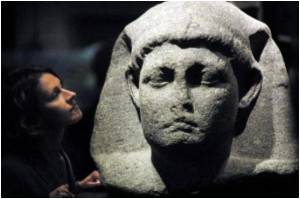The legend has it that in a bid to win a bet, Cleopatra quaffed a vinegar martini made with a dissolved pearl, the largest in the whole of history.

She racked up a banquet bill of 10 million sesterces (sesterces were the nickels of the ancient world), thanks to the destruction of the pearl.
"There's usually a kernel of truth in these stories. I always prefer to give ancient sources the benefit of the doubt and not assume that something that sounds far-fetched is just fiction," USA Today quoted Jones as saying.
"I think there was a fairly good understanding of practical chemistry in the ancient world," Jones said by email.
Pearls were a popular adornment for the wealthy in the Roman era, thus making dissolving one a truly wasteful act.
"I think modern scholars dismiss the story more out of disbelief," said Jones.
Advertisement
But the news never made it to most classicists, said Jones, author of 'Cleopatra: Life n Times'.
Advertisement
"Experiments reveal that a reaction between pearls and vinegar is quite possible," concluded the study.
Calcium carbonate plus the vinegar's acetic acid in water produces calcium acetate water and carbon dioxide.
Jones found a 5 percent solution of acetic acid, sold in supermarkets today and well within concentrations produced naturally by fermentation, takes 24 to 36 hours to dissolve a 5-carat pearl.
Boiling the vinegar, or crushing the pearl, or both, greatly speeds up the reaction, perhaps to under 10 minutes. Interestingly, stronger solutions of acetic acid greatly slows down dissolving (the water takes part in the reaction), something that may have hindered folks testing Pliny's veracity in the past.
So, if Cleopatra crushed the pearl, the story may be true, said Biochemist Takeshi Furuhashi of Austria's University of Vienna.
"However, if she put her earring directly into solution, it is impossible to obtain the same results," he added.
She may also have soaked the pearl in vinegar for a day or two to soften it up, he adds. Indeed, Jones says other stories about ancient wastrels knocking back pearl boilermakers involve prepared vinegar and pearl solutions being brought to the banquet table.
"I think the most likely explanations for the discrepancy between the experiment and the (legend) Pliny describes, during a banquet, are that the story compresses events for dramatic effect," said Jones.
"Or that Cleopatra drank the cocktail with the pearl only partially disintegrated, having satisfied her guests that it was destroyed," she added.
And there is always the chance, suggests Furuhashi, that she just palmed the pearl and duped Antony.
Source-ANI







